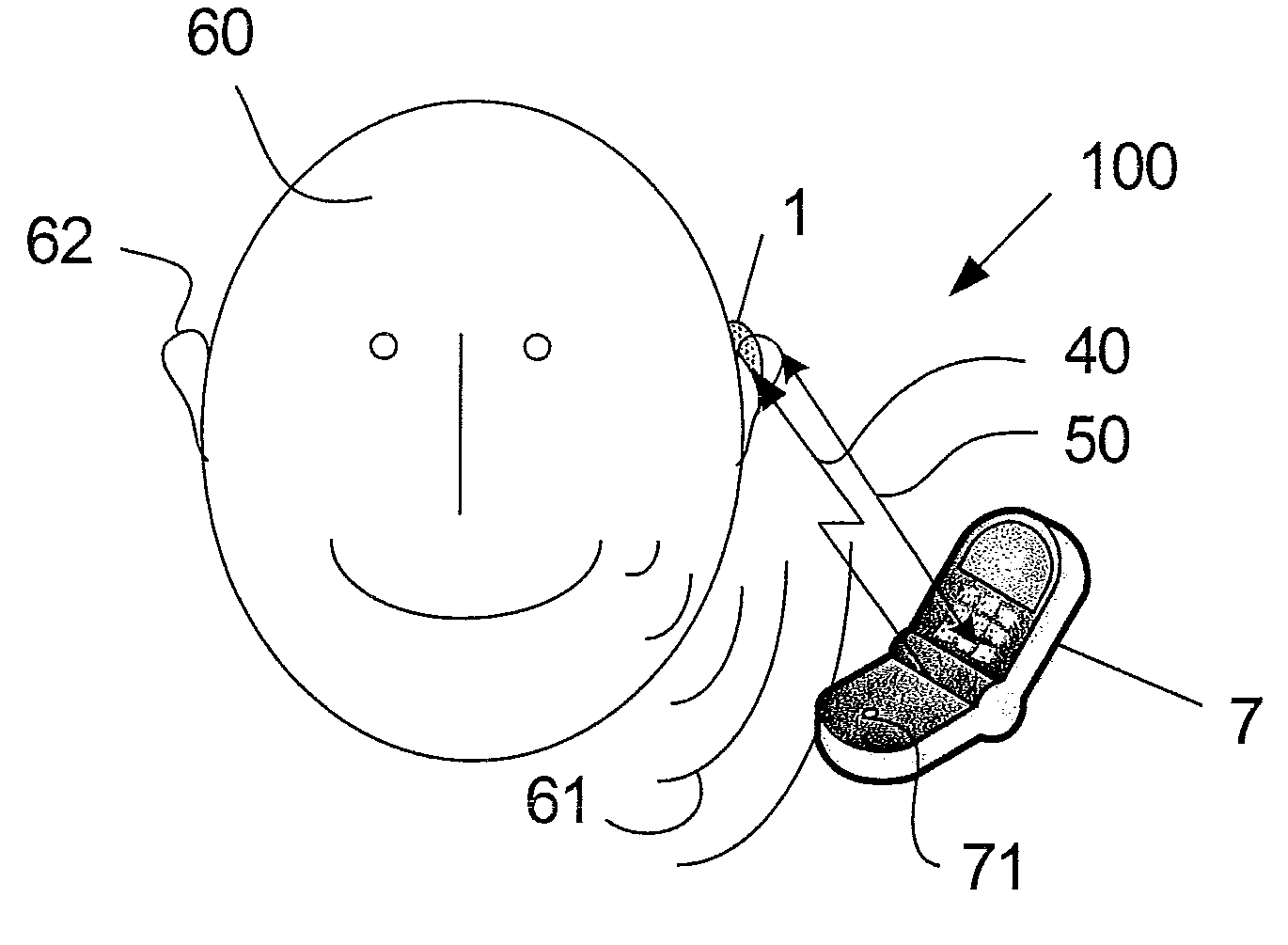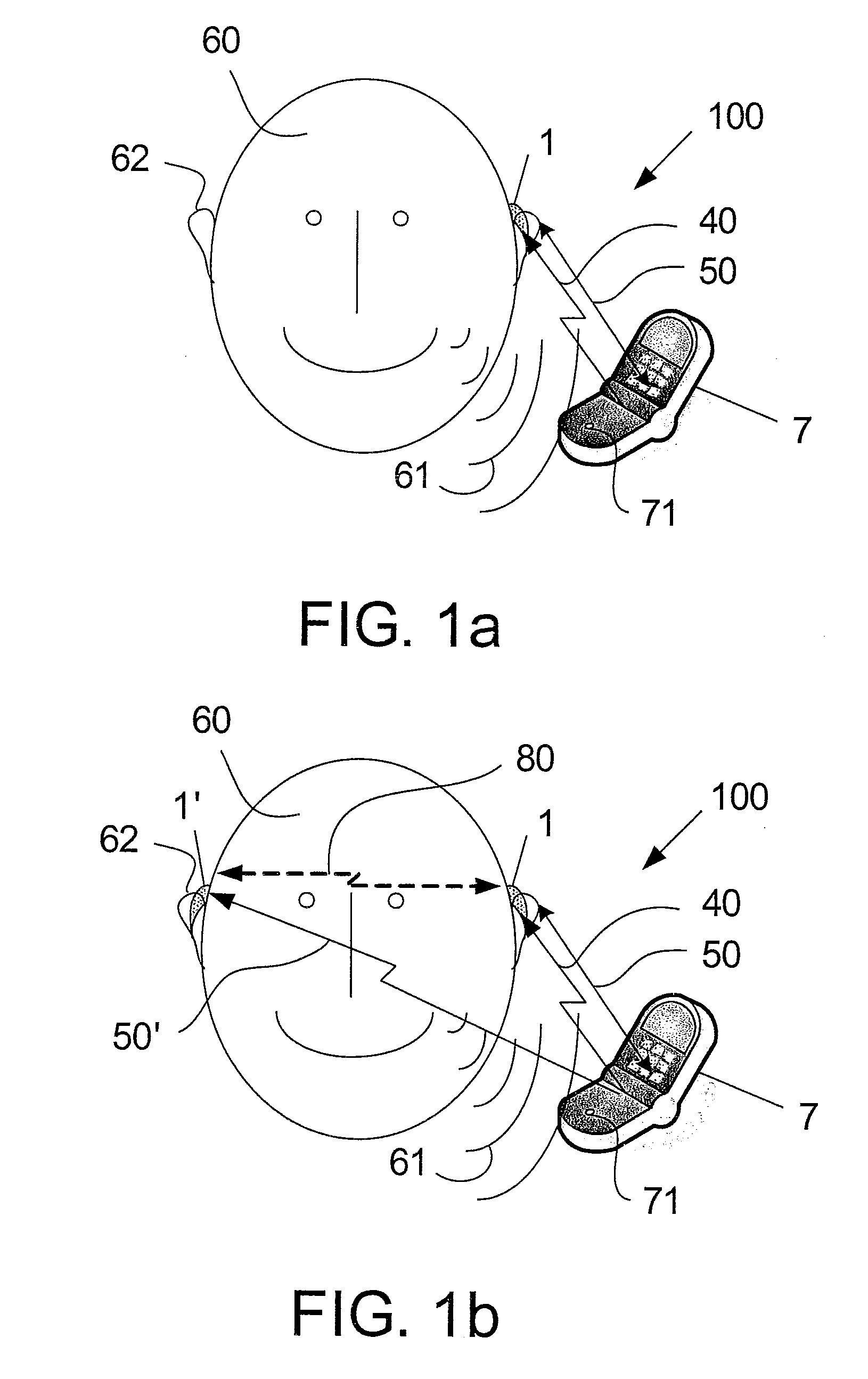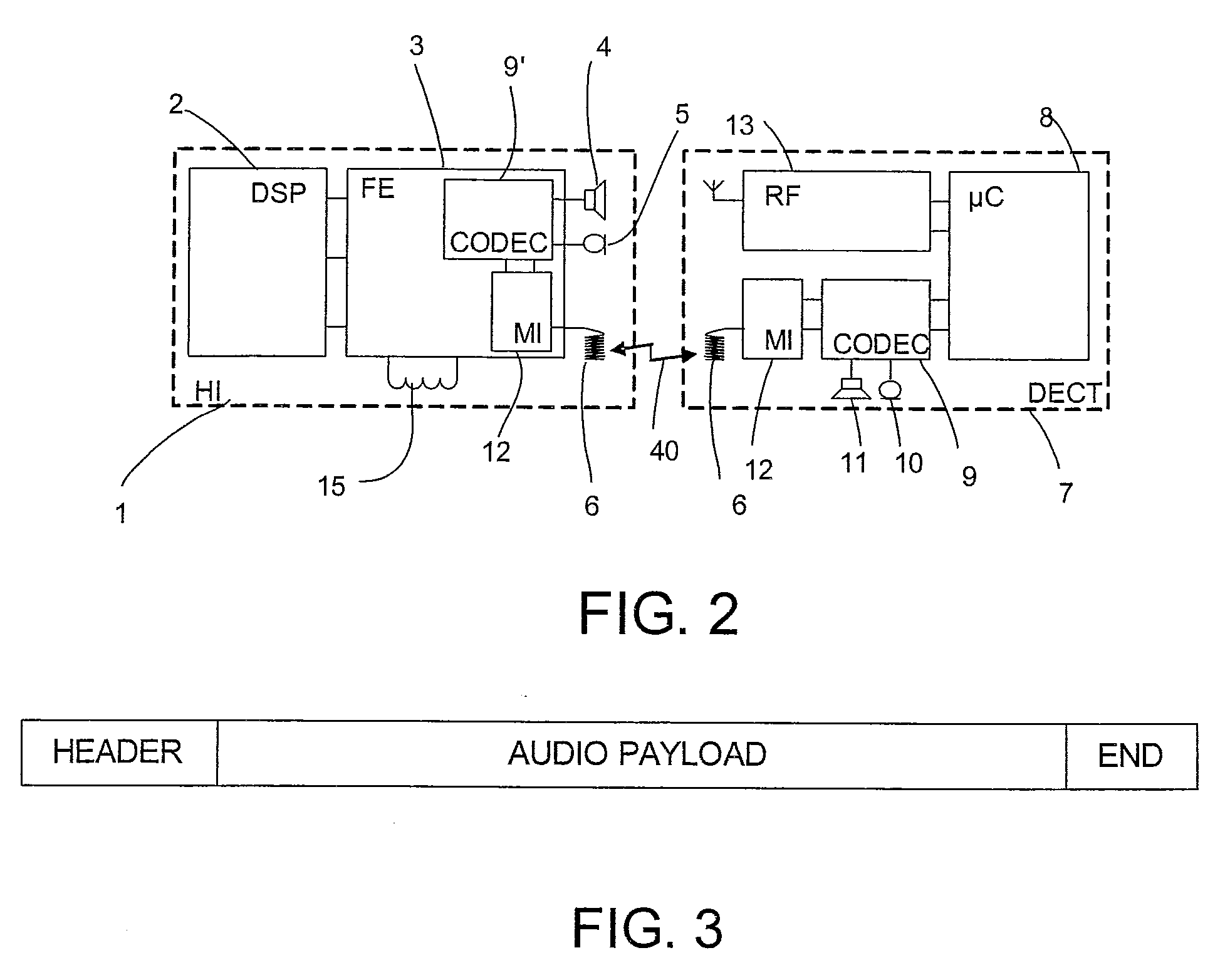Hearing aid system with a low power wireless link between a hearing instrument and a telephone
a low-power wireless link and telephone technology, applied in the field of hearing aid systems, can solve the problems of requiring additional power-consuming communications interfaces, prone to interference, and practically impossible to integrate the respective wireless interfaces into hearing instruments directly, so as to avoid or minimize buffering, avoid or minimize transmission protocol overhead, and avoid or minimize coding complexity
- Summary
- Abstract
- Description
- Claims
- Application Information
AI Technical Summary
Benefits of technology
Problems solved by technology
Method used
Image
Examples
Embodiment Construction
[0055]FIG. 1 shows a hearing aid system 100 according to an embodiment of the invention. The system comprises a digital cordless telephone 7, e.g. a DECT telephone, and a hearing instrument 1, the telephone 7 comprising a transmitter for establishing a digital, short range, low power wireless communications link 40 to a receiver of the hearing instrument 1. The hearing instrument is worn by a user 60 in or (as here) behind an ear 62. The short range wireless link 40 can be established to support a telephone connection from the telephone 7 held by the user 60 in an appropriate (short range, e.g. ≦0.5 m or ≦0.2 m) distance 50 from the hearing instrument 1 to a remote apparatus, e.g. via a public telephone network. During the telephone conversation between the user 60 wearing the hearing instrument, any sounds 61 from the user is picked up by a microphone 71 of the telephone and treated in the normal way by the telephone (i.e. forwarded to a remote apparatus currently connected to the ...
PUM
 Login to View More
Login to View More Abstract
Description
Claims
Application Information
 Login to View More
Login to View More - R&D
- Intellectual Property
- Life Sciences
- Materials
- Tech Scout
- Unparalleled Data Quality
- Higher Quality Content
- 60% Fewer Hallucinations
Browse by: Latest US Patents, China's latest patents, Technical Efficacy Thesaurus, Application Domain, Technology Topic, Popular Technical Reports.
© 2025 PatSnap. All rights reserved.Legal|Privacy policy|Modern Slavery Act Transparency Statement|Sitemap|About US| Contact US: help@patsnap.com



